Amazing scientific journey in the Babylon wetlands – central Iraq
Guest blog by Kamil Al-fayadhi
Babylon, an ancient city situated on the lower Euphrates River in southern Mesopotamia, is located about 85 kilometers south of Baghdad. It served as the primary cultural and political hub of the Akkadian-speaking region of Babylonia. The rulers of Babylon established two significant empires in ancient times: The Old Babylonian Empire from the 19th to 16th century B.C., and the Neo-Babylonian Empire from the 7th to 6th century B.C. Additionally, Babylon was used as a regional capital by other empires, including the Achaemenes Empire. Notable nearby ancient sites include Kish, Borsippa, Dilbat, and Kutha.
In 2019, fueled by a passion for wildlife conservation in Iraq, I took to social media to raise awareness and embarked on numerous field trips across the Iraqi region. Despite my limited expertise in bird classification, the invaluable guidance and support of two remarkable persons, Mohammad Al-Zair and Faisal Hajwal, from the Bird Monitor Group in the Arabian Peninsula (BIRDSMG), empowered me to pursue ornithology.
With unwavering support from my family within BIRDSMG, I delved into bird monitoring, undertaking work such as observing the breeding behaviors of Glossy Ibis (Plegadis falcinellus) in the Babylon wetlands in 2021. From courtship rituals to nest building and the fledging of juveniles, I meticulously documented these events amidst large colonies of herons, egrets spp., Pygmy Cormorants (Microcarbo pygmaeus), and Grey-headed Swamphens (Porphyrio poliocephalus), sharing my findings on the BIRDSMG website. link
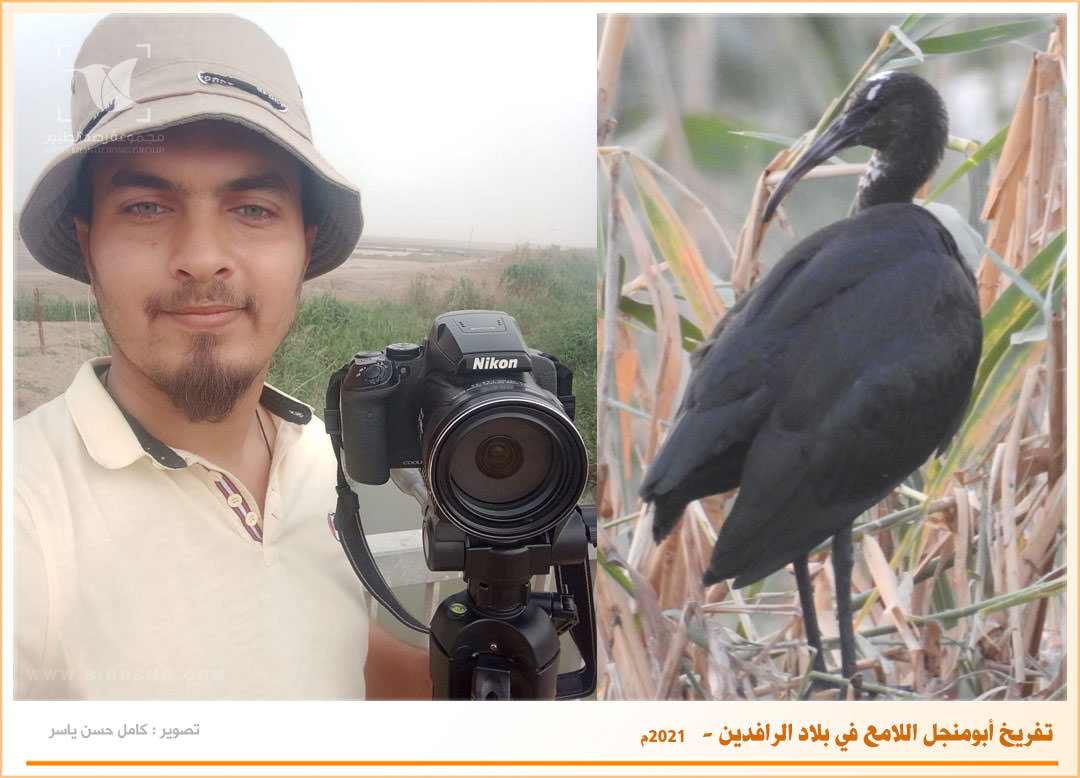
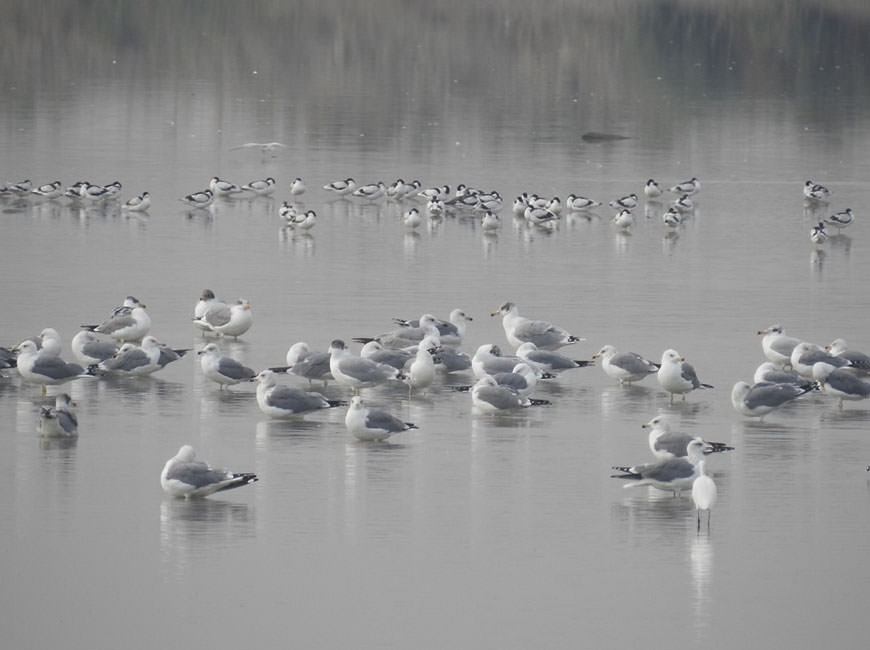
My scientific endeavors also led me to explore lesser-known areas, such as the “Al Malih marshland” in the northern part of the Babylon province. Beginning in 2019, my birdwatching expeditions in this region unveiled a diverse avian population, with sightings of over 60 bird species, including numerous migrants like the Pied Avocet (Recurvirostra avosetta), various waders species and gull species.
Despite the dearth of data on bird populations or species composition in Babylon province, initiatives like the Iraq Nature Organization’s Key Biodiversity Areas (KBA) project have identified areas of significance, such as the Ibn Najim wetland and the Hindiya Bridge, along with Mussaib city, as KBAs. Through my research and documentation efforts, I aim to contribute valuable insights into the avian biodiversity of Babylon, shedding light on previously unexplored ecosystems and advocating for their conservation.
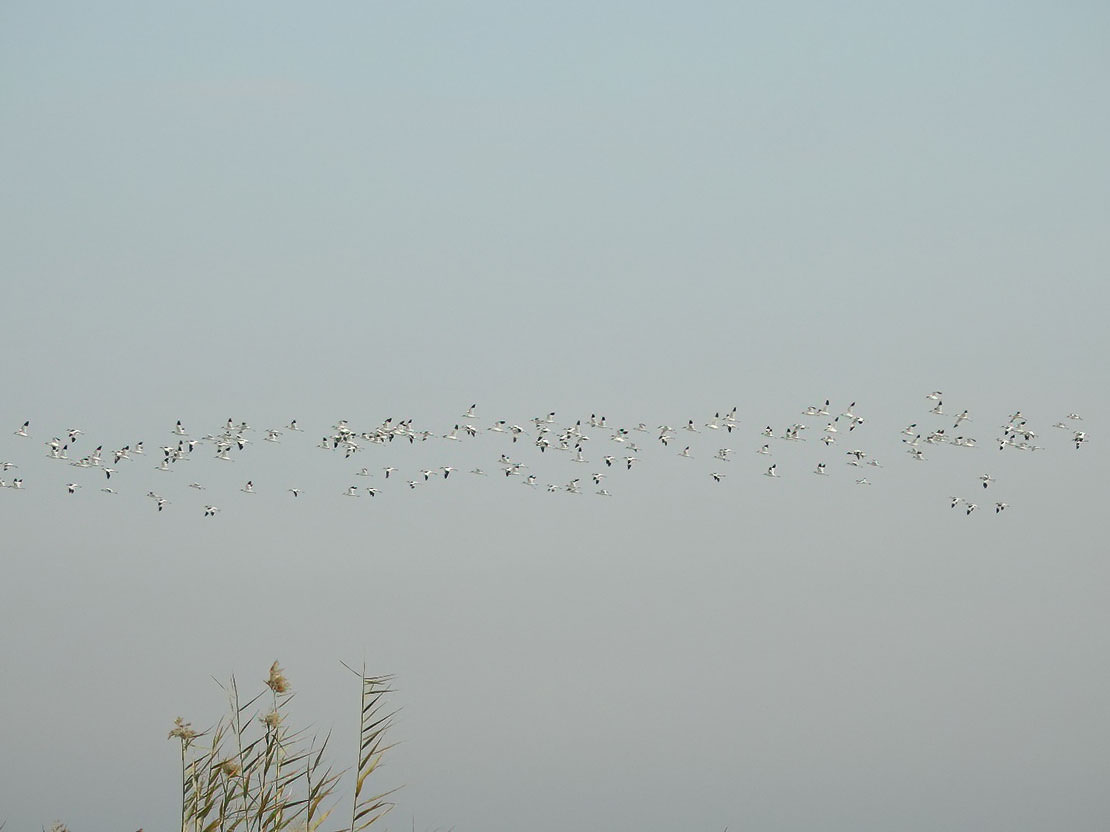
A large flock of Pied Avocet R. avosetta in January 2023 in Al-Malih marshland
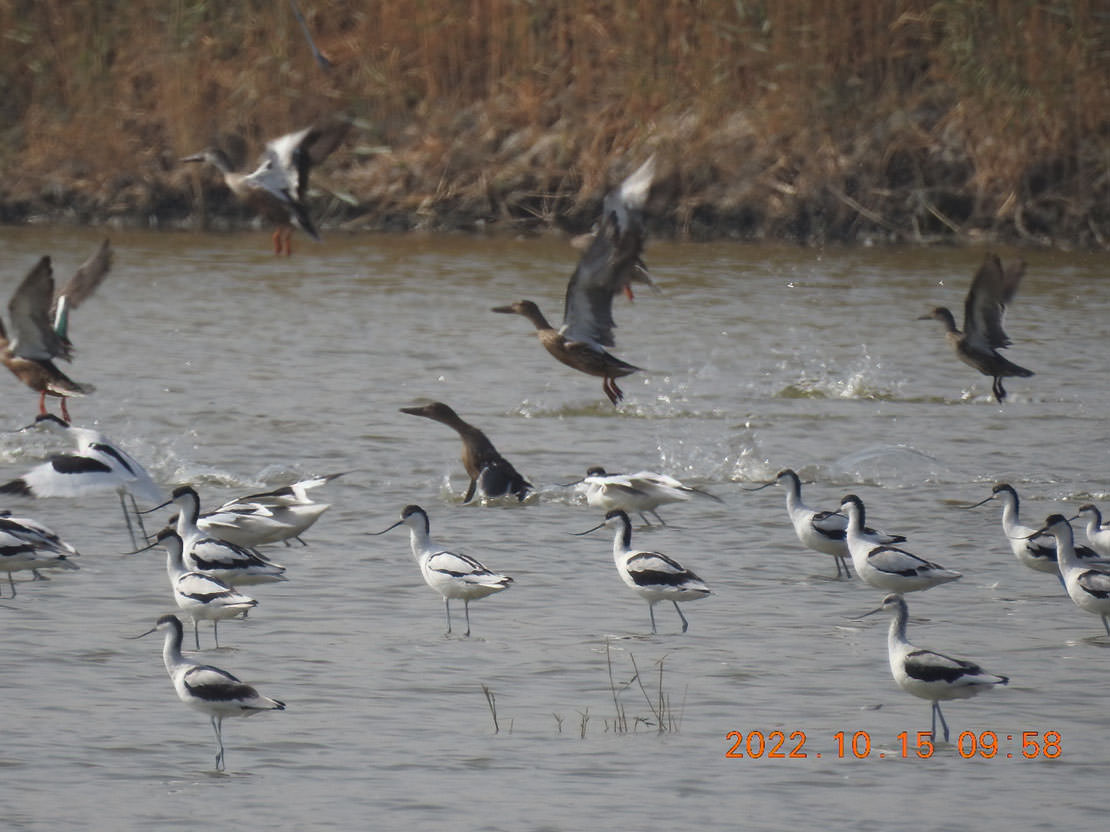
2021, inspired by the encouragement of my esteemed teacher, Professor Dr. Moaed J. Al-Amary, I made the decision to pursue a master’s degree in bird ecology at my university. During the research year of my master’s program in 2022, I embarked on my thesis focused on the Al-Malih marshland. The aim was to assess the bird diversity in this area, identify endangered species, and conduct a specific study on lapwing species (Vanellus spp.) to determine population density and breeding biology, marking the first such study in the Middle East. I have shared my thesis on Research gate with accompanying articles slated for publication in June 2024.
Study area:
The Al-Malih marshland is situated in the northern region of Babylon province (N 32°48’56”, E 44°20’37”), approximately 54.78 km south of Baghdad. It receives water from the Euphrates River via two channels that traverse the area, covering an estimated 2000 hectares (20 km²). The majority of this water has been converted into fish farms, facilitated by the low-lying terrain that aids in water retention. Classified as a wetland, the area is home to threatened animal species, including the Eurasian Otter (Lutra lutra) and the Euphrates Softshell Turtle (Rafetus euphraticus).
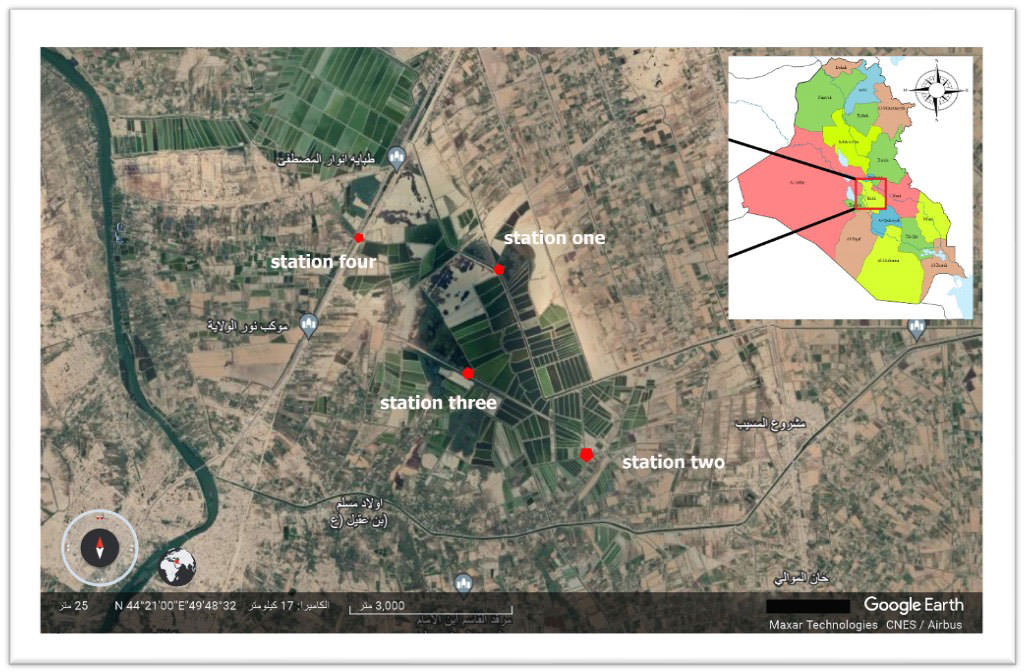
Results 2022-2023
Field surveys at Al-Malih area (September 2022 – August 2023) recorded a total of 122 bird species, belonging to 17 orders and 38 families. This represents approximately 30.65% of the total number of bird species in Iraq.
Also, four species of lapwing from the Vanellus genus were observed. It’s exciting to note that Al-Malih area holds ecological significance for globally threatened bird species. Out of the 122 recorded species, seven were listed on the IUCN red list. These species accounted for about 5.98% of the bird species in Al-Malih area and 25.9% of the total threatened bird species in Iraq (including 9 species classified as Vulnerable and 18 species classified as Near Threatened). This information is based on data from Birdlife data in 2023. (VU,9 species; NT,18 Spp., categories of IUCN).
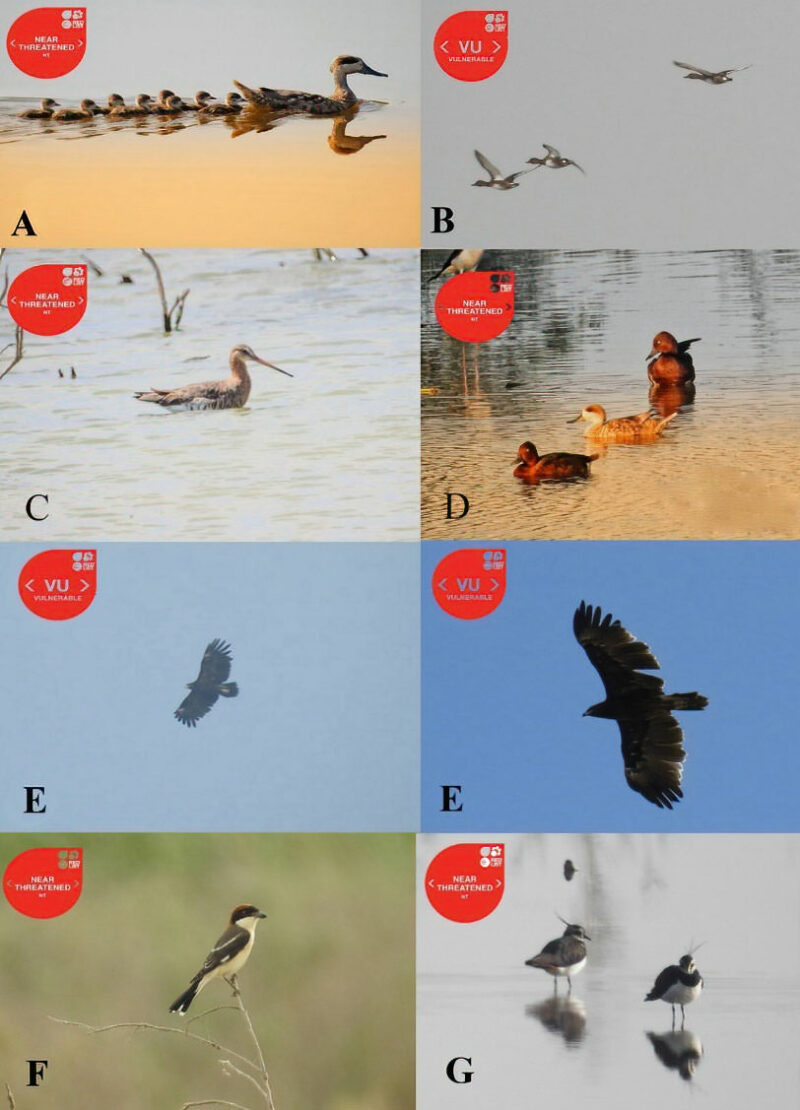
Several endangered bird species in my study were observed, including
A: the Marbled teal Marmaronetta angustirostris (NT), B: Common Pochard Aythya ferina (VU),
C: Black-tailed Godwit Limosa limosa (NT), D: Ferruginous Duck Aythya nyroca (NT),
E: Greater spotted eagle Clanga clanga two age (VU), F: Woodchat shrike Lanius senator (NT),
G: Northern lapwing Vanellus vanellus (NT).
The research focused on the morphometric differences in lapwing chicks and eggs. Interestingly, the results revealed significant variations in the measurements of eggs and chicks among the Vanellus spp. For more detailed information, you can find the full thesis on the Research Gate website.
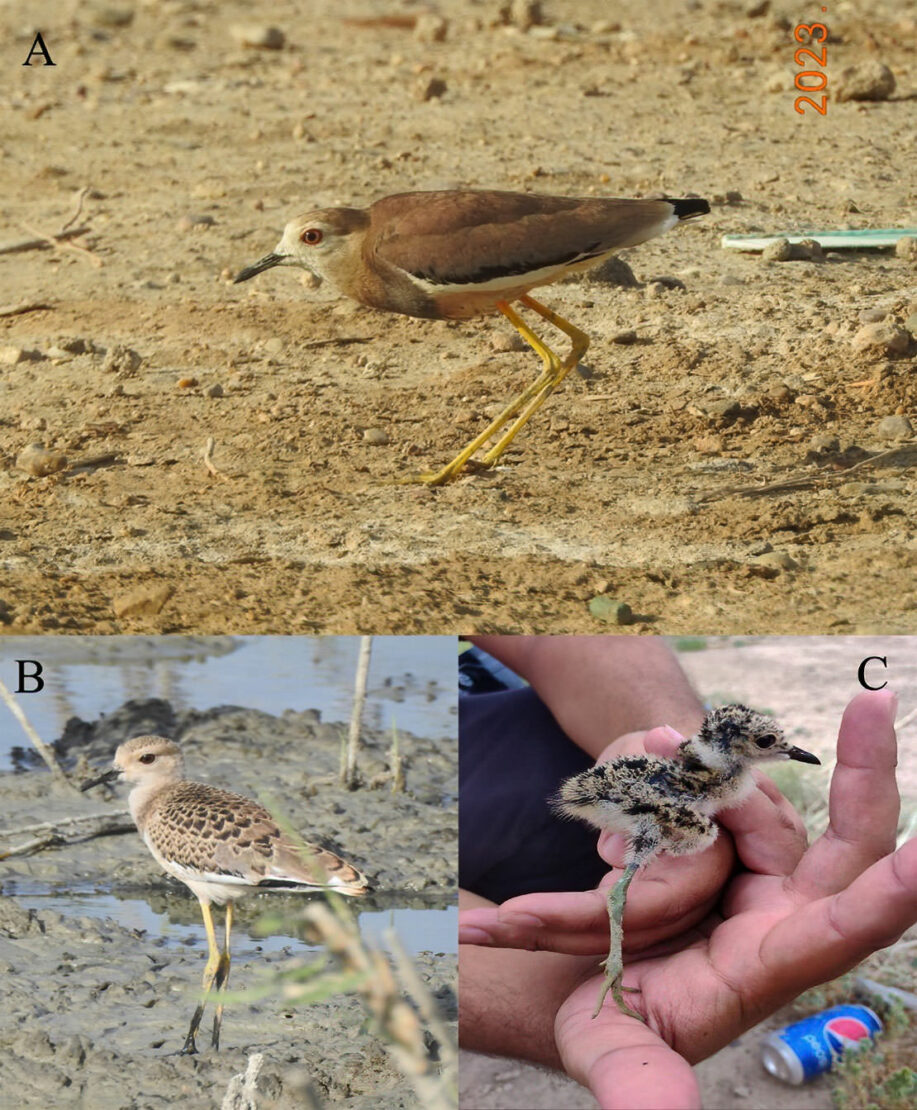
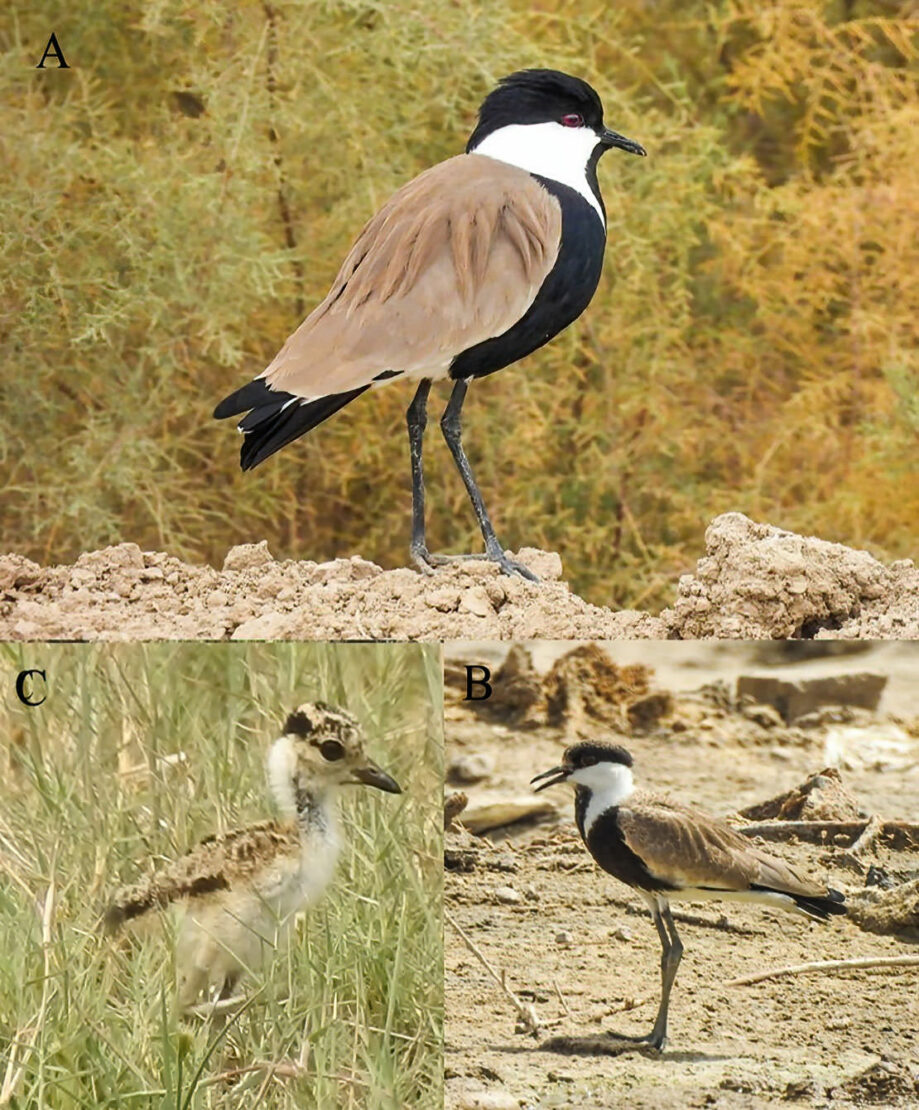
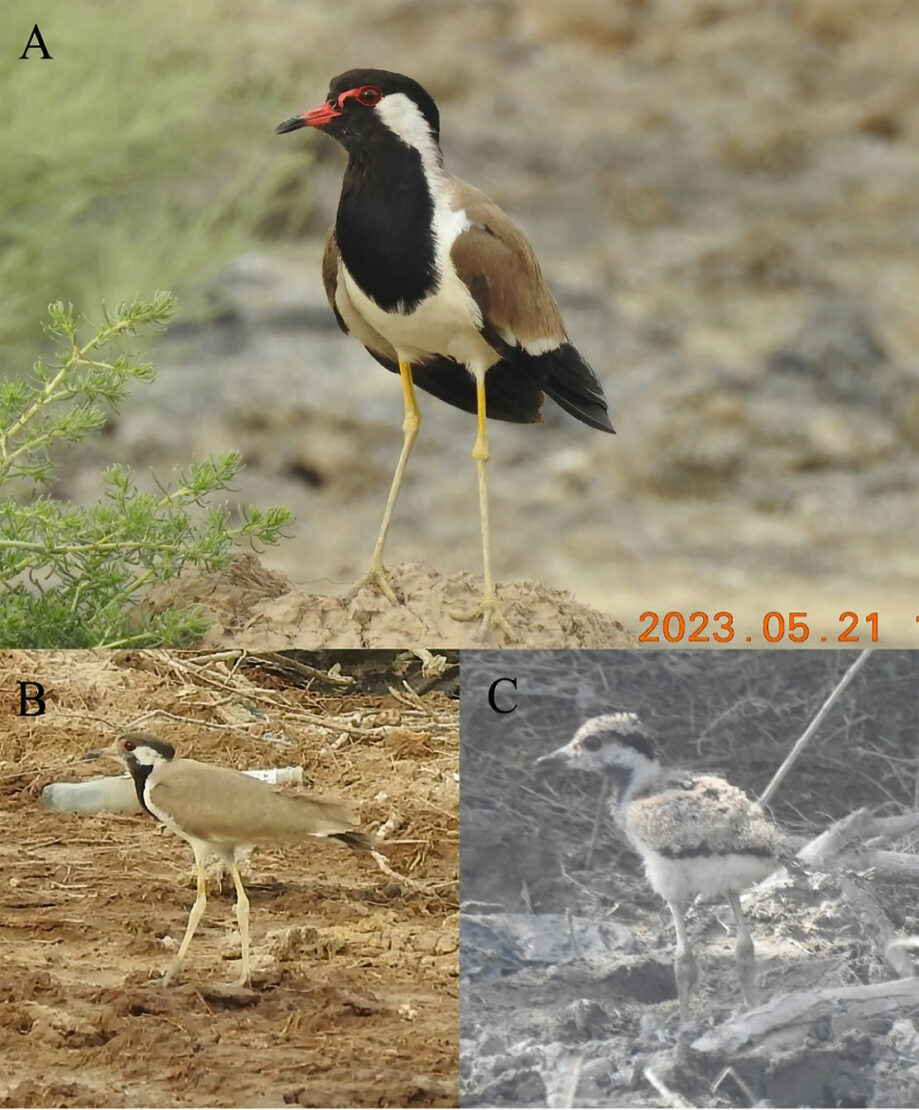
Threat impact on bird species in al Malih area:
In the al Malih area, our study identified several threats to bird species (September 2022-August 2023). However, further investigation is needed, such as using the IUCN threatened model.
Here are the key threats we observed:
- The primary threat is the modification of the natural system through water management, which leads to the destruction of suitable habitats for all bird species.
- Illegal hunting, including the use of hunting guns, traps, and electro-fishing, poses a threat by depleting food resources for water birds.
- Pollution from waste and improper disposal of municipal water has been observed over the course of several months.
- The presence of invasive species like Tilapia zillii, commonly known as Tilapia fish.
- Agriculture expansion and drought, particularly during the summer season (June, July 2023).
- Climate change and the construction of dams by neighboring countries also contribute to the threats faced by bird species.
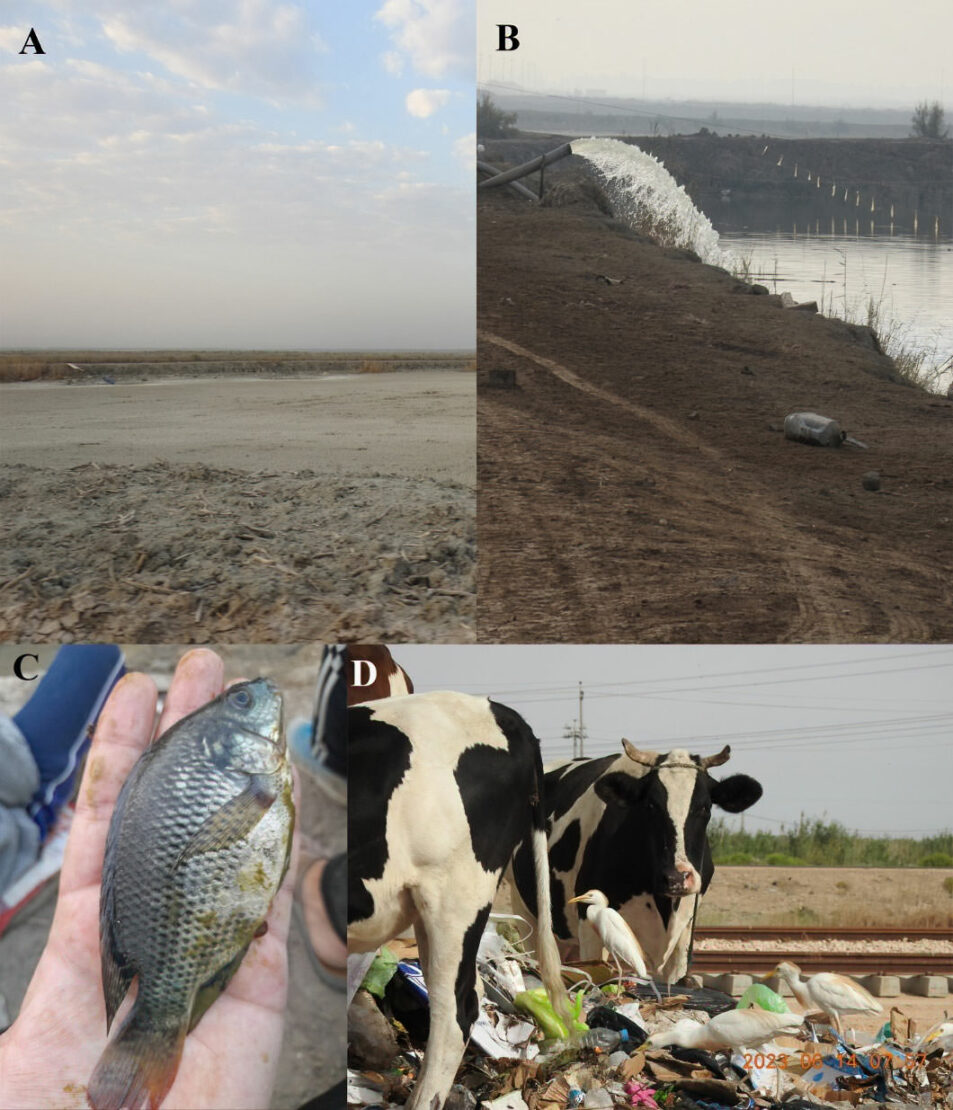
- A: The area experiences drought during the summer season in July.
- B: There is a need for better water management, particularly in relation to fish farms.
- C: The presence of invasive species, specifically Tilapia zillii, is a concern.
- D: Pollution from waste and cattle is linked to the expansion of agriculture.
Challenges and prospects
The security risks in the areas near the Rock Cliff and Latifite are of big concern, and it’s frustrating that the security agencies aren’t cooperating. The lack of proper equipment is also considering a main challenge. It seems like there’s a need for more specialized knowledge and training in studying Iraqi birds. It’s unfortunate that genetic research and studies are too costly for the subjects that haven’t been studied before. These are definitely obstacles that need to be overcome to advance scientific ornithology research in Iraq.
There are many new discoveries that require further study. I can confirm some important details about birds, such as the breeding of many species for the first time or their occurrence in Babylon wetlands. I am currently working on completing this task and aiming to publish it in articles as soon as possible. Additionally, I have conducted numerous trips to different ecoregions in my county to study bird diversity, habitats, and ecology. I am also preparing to pursue a Ph.D. in Bird Ecology to gain the best knowledge and research tools for future research on Iraqi birds.
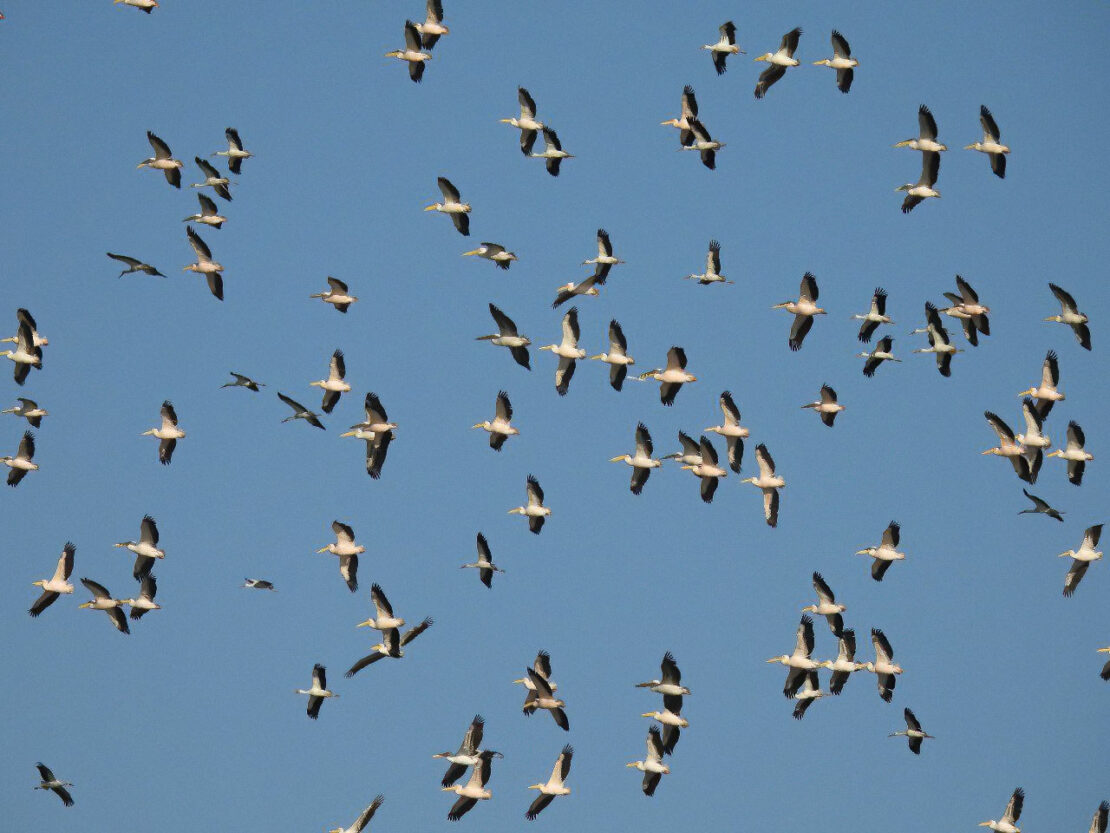
Developing a sustainability plan for a project is crucial for its long-term success and positive impact.
We are addressing The Ministry of Environment to make a strong case for considering the area as a natural reserve due to its rich biodiversity, particularly the endangered species that frequent or migrate through the wetlands in northern Babylon.
The scientific study on birds is aimed at protecting these species and raising awareness among the local community. It’s exciting that the researchers will be officially nominated for protection after my publications in June 2024, along with my thesis. This is a significant step towards preserving the precious ecosystem.
- Environmental Impact: Identify ways to minimize the project’s environmental footprint. This can include implementing energy-efficient practices, reducing waste generation, and promoting sustainable resource management.
- Economic Viability: Plan for the project’s financial sustainability by considering revenue generation, cost management, and long-term funding strategies. This will help ensure the project’s continued operation and growth.
- Stakeholder Engagement: Involve relevant stakeholders throughout the project’s lifecycle to gather input, address concerns, and build strong relationships.
- Monitoring and Evaluation: Establish mechanisms to regularly assess the project’s progress and impact. This will allow for adjustments and improvements to be made, ensuring the project stays on track towards its sustainability goals.
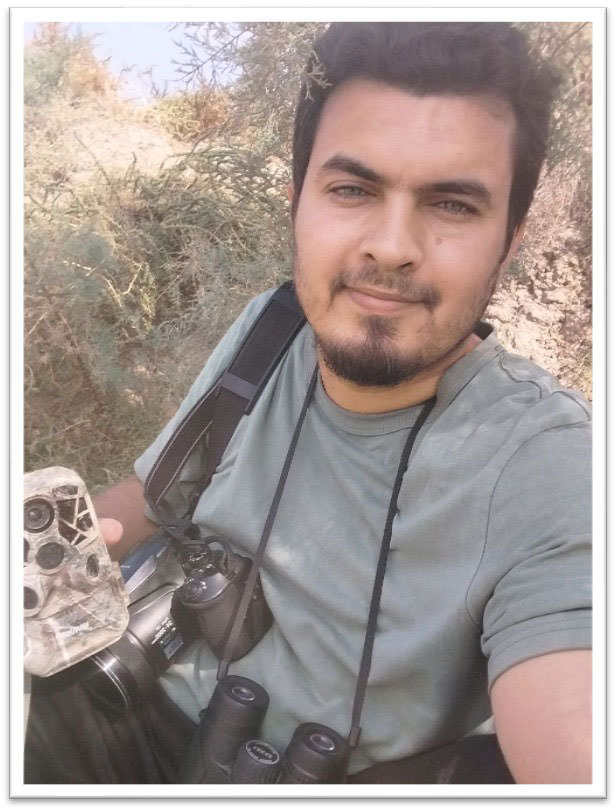
Kamil H. Al-Fayadhi (M.Sc. in Animal Ecology), Iraqi ornithologist, member in Bird monitoring group in Arabian Peninsula (Arabian Gulf) and member in Al-Numan organisation for protected the environment (Iraq)

A great effort by Professor Kamel, his passion and keenness to monitor and discover the Iraqi environment and his keenness to preserve it. We ask for permanent support and the provision of all requirements for him and for all parties that make an effort to serve nature. Always and forever thanks